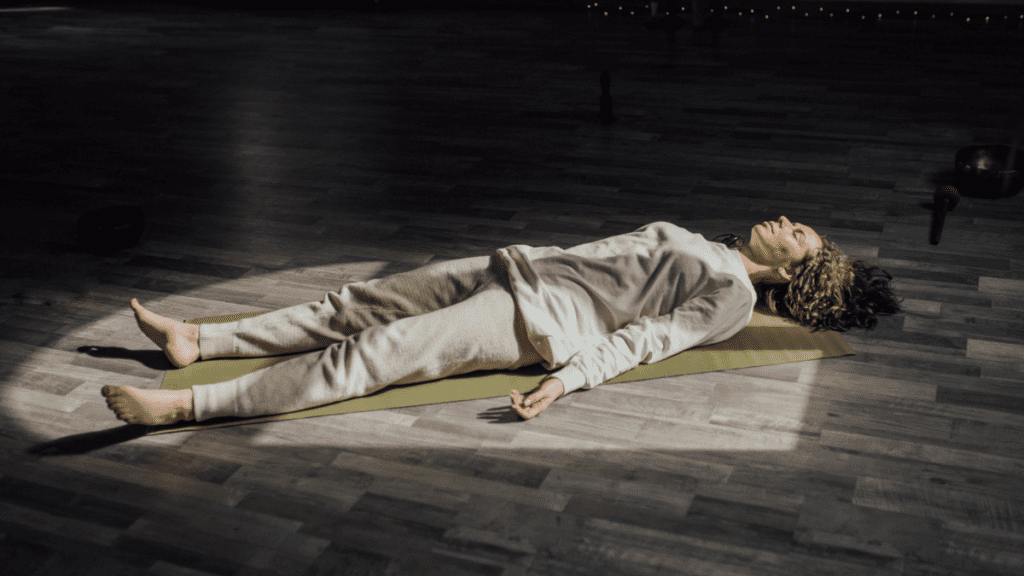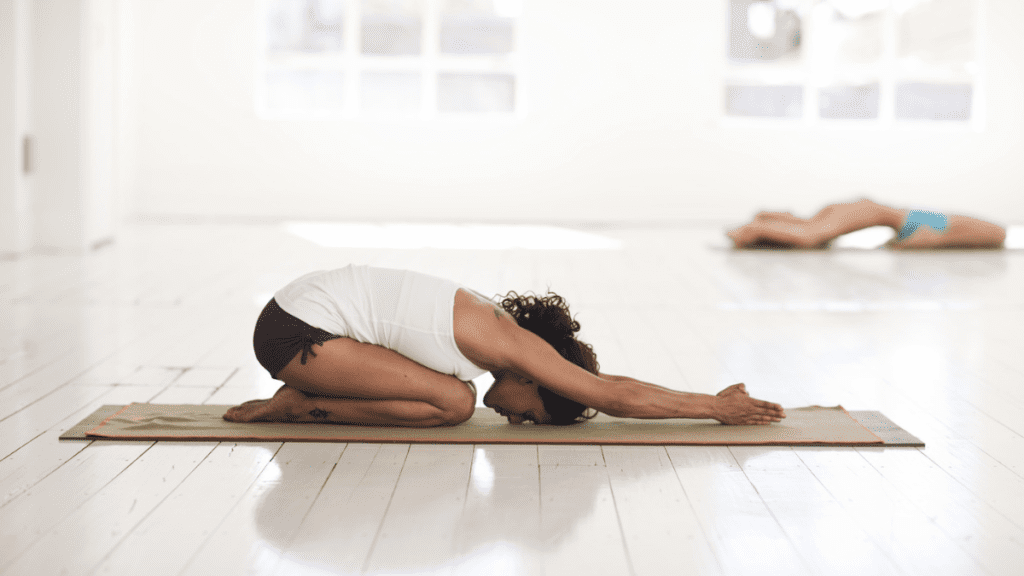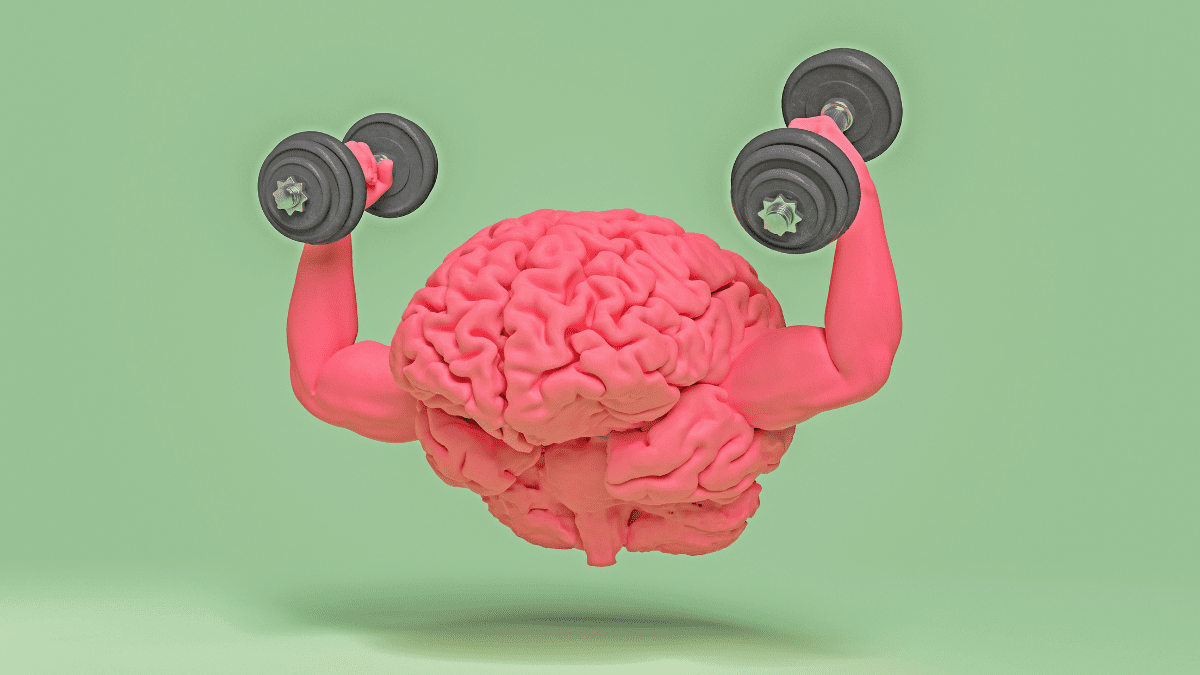What Is Yoga Nidra? Everything You Need to Know
What is Yoga Nidra and why is it exploding in wellness circles? Discover the powerful, proven technique for instant calm, deep healing, and total inner reset—fast.

In This Article
- What Is Yoga Nidra? A Powerful Practice You Need to Know
- What Is Yoga Nidra and Why Is It So Transformational?
- What Is Yoga Nidra Backed by Science and Research?
- How To Practice What Is Yoga Nidra For Maximum Benefits
- What Is Yoga Nidra’s Role In Emotional And Spiritual Healing
- Common Misconceptions About What Is Yoga Nidra
- Conclusion: Unlock the Healing Power of Yoga Nidra
- What Is Yoga Nidra — FAQ
What Is Yoga Nidra? A Powerful Practice You Need to Know
What is yoga nidra, and why is it showing up in conversations about healing, rest, and consciousness? This powerful practice isn’t just a trend. It’s a scientifically backed method that guides your body into deep rest while keeping your mind gently aware.
Unlike traditional yoga, yoga nidra requires no movement. You simply lie down and listen. Yet the benefits go far beyond relaxation. It can improve sleep, reduce anxiety, and help you reconnect with yourself on a deeper level.
In this guide, you’ll learn exactly what yoga nidra is, how it works, and why it might be the best-kept secret in the wellness world. We’ll also explore the science behind it and how to start your own practice. If you’re already exploring healing tools, you may also love our article on Remedies for Sleep Deprivation—a great complement to yoga nidra.
Whether you’re seeking calm, clarity, or just a better night’s sleep, this is everything you need to know about yoga nidra.
What Is Yoga Nidra and Why Is It So Transformational?
Is Yoga Nidra Really Just Yogic Sleep?
At first glance, yoga nidra may sound like a guided nap. The term itself translates to “yogic sleep.” However, that name only tells part of the story. While your body enters a sleep-like state, your mind stays gently aware. This unique state creates space for deep healing and restoration.
Instead of drifting into unconsciousness, you rest at the edge of awareness. As a result, you experience full-body relaxation while still remaining mentally present. That’s exactly what makes yoga nidra so different—and so powerful.
What Is Yoga Nidra Doing to the Mind and Body?
Yoga nidra doesn’t just relax you—it changes your brain. As you settle into the practice, your brain shifts from active beta waves into alpha and theta states. These slower waves are associated with creativity, healing, and intuition.
At the same time, your parasympathetic nervous system becomes activated. This is the part of your body responsible for rest and recovery. According to Verywell Mind, this shift can lower cortisol levels, reduce blood pressure, and ease chronic stress. Therefore, yoga nidra isn’t just relaxing—it’s deeply restorative on a physiological level.
How Is Yoga Nidra Different From Traditional Meditation?
While both yoga nidra and meditation promote awareness, their approach is quite different. In traditional meditation, you’re often asked to observe your breath or focus on a mantra. In contrast, yoga nidra invites you to release control entirely.
Rather than concentrating, you allow your awareness to move inward—layer by layer. Because of this, many people find yoga nidra easier to practice, especially during times of mental fatigue. Even though you’re not “doing” anything, the effects can be profound.
Moreover, yoga nidra often leads to states of consciousness that are difficult to reach through seated meditation alone. That’s why it’s considered a bridge between wakefulness and true inner stillness.
Can Anyone Practice Yoga Nidra, Even Without Experience?
Absolutely. One of the most beautiful things about yoga nidra is its accessibility. There’s no need to stretch, balance, or even sit upright. All you have to do is lie down, close your eyes, and follow the voice that guides you.
Because it’s so gentle, yoga nidra is ideal for beginners, those healing from trauma, or anyone struggling with anxiety or fatigue. It also doesn’t require any prior knowledge or spiritual background. Therefore, it’s a practice that truly meets you where you are.
Whether you’re exhausted, overwhelmed, or simply curious, yoga nidra offers a doorway into deep rest and realignment—without effort.
What Is Yoga Nidra Backed by Science and Research?
What Happens in the Brain During Yoga Nidra?
To understand what is yoga nidra, we need to look at the brain. During a session, brainwaves shift into alpha and theta states. These are deeply restorative frequencies.
As a result, the nervous system relaxes. Blood pressure drops. Breath becomes slower. Additionally, activity in the prefrontal cortex reduces—helping silence overthinking.
To improve the benefits of your practice, here’s what happens inside the body:
- Alpha waves calm the mind and sharpen creativity.
- Theta waves access memory and emotion.
- Reduced cortisol lowers stress and inflammation.
So, instead of just resting, your brain resets.
What Is Yoga Nidra Proven to Help With, Scientifically?
Clinical studies have shown that yoga nidra supports both physical and mental health. For example, it can reduce anxiety, boost sleep quality, and regulate mood.
Moreover, research confirms that consistent practice improves emotional resilience. It may also help those recovering from trauma or burnout.
Yoga Nidra Can Support:
- Anxiety and panic reduction
- Sleep disorders and insomnia
- Chronic pain and fatigue
- Post-traumatic stress symptoms
Therefore, this isn’t just a wellness trend. It’s a proven tool for healing.
You can read more about what is yoga nidra from a medical perspective in this scientific review breaking down its neuroscience and benefits.
How Is Yoga Nidra Used in Therapy and Psychology?
Increasingly, therapists are using yoga nidra to support clients. It’s being added to PTSD treatment programs, addiction recovery, and stress management clinics.
Because it’s non-invasive and accessible, it works well alongside other therapies. Many mental health professionals now recommend it to clients struggling with nervous system overload.
The best way to start using yoga nidra as therapy is simple:
- Choose a trauma-informed guide.
- Practice in a quiet, safe space.
- Use short sessions at first (10–20 minutes).
As a result, your system learns to trust rest again.

How To Practice What Is Yoga Nidra For Maximum Benefits
What Is Yoga Nidra Like For First-Time Practitioners?
First-time sessions often feel surprising. While the body rests, the mind stays lightly aware. That contrast creates deep calm, sometimes within minutes.
Most people notice tension releasing right away. Some even feel like they’ve slept for hours—after just 20 minutes.
To improve your first experience:
- Lie down in a quiet, dimly lit room.
- Use a soft mat or cushion.
- Cover yourself with a light blanket.
- Close your eyes and stay still.
- Listen to a trusted guide or recording.
Although it feels effortless, your nervous system resets in this state.
How Long Should A Yoga Nidra Session Really Be?
For beginners, 10–20 minutes is enough. However, longer sessions offer deeper rest. Many people practice for 30–45 minutes when possible.
The best way to build consistency is simple:
- Start short (10–15 minutes).
- Set a routine time each day.
- Let go of expectations.
As a result, you’ll notice better sleep, mental clarity, and emotional balance over time.
Where To Find Trusted What Is Yoga Nidra Guides And Teachers
Finding the right teacher makes a big difference. Trusted platforms offer both free and premium content.
Recommended sources for quality guides include:
- Insight Timer
- Headspace
- YouTube (certified instructors only)
- Yoga studios offering audio downloads
Choose voices that feel safe and calming. That comfort deepens the experience.
Can Practicing What Is Yoga Nidra Daily Improve Your Well-Being?
Yes, absolutely. Regular practice builds inner stability. Over time, you’ll notice emotional tension easing. Your sleep may improve. Your thoughts may slow down.
Daily sessions don’t need to be long. Even 10 minutes a day makes a real impact.
Try this simple habit stack:
- Morning: 10 minutes before coffee
- Midday: 15-minute reset during a break
- Evening: 20 minutes before bed
As this becomes routine, the nervous system adapts. That’s when lasting transformation begins.
What Is Yoga Nidra’s Role In Emotional And Spiritual Healing
How Can Yoga Nidra Help With Emotional Release?
Many people carry stress in their bodies without realizing it. What is yoga nidra offering in this case? A safe space to gently release emotional tension.
As the body relaxes, layers of suppressed emotion may surface. Because the mind remains conscious, you can witness these feelings without judgment.
Yoga nidra helps you:
- Process unspoken grief
- Reduce anxiety stored in the body
- Release negative thought loops
- Feel grounded and centered
Instead of pushing emotions away, you learn to let them move through you.
What Is Yoga Nidra’s Connection To Self-Realization?
Yoga nidra isn’t just about relaxation. It’s a path to deeper awareness. While your body rests, you journey inward—past the noise of the thinking mind.
Through regular practice, a quiet sense of identity begins to unfold. That’s why many describe it as spiritual—not because it belongs to a belief system, but because it reconnects you to your true self.
To improve your spiritual growth through yoga nidra:
- Set a heartfelt intention before each session
- Stay curious about what arises internally
- Embrace silence as a teacher
Eventually, you’ll feel more aligned with who you truly are.
Does Yoga Nidra Help Improve Sleep And Reduce Anxiety?
Absolutely. When the nervous system is overloaded, sleep becomes difficult. What is yoga nidra doing to help? It activates your body’s rest-and-digest mode.
Breathing slows. Muscles soften. The mind stops racing.
To experience these results faster:
- Practice consistently at the same time daily
- Choose sessions focused on sleep or anxiety
- Let go of the outcome
Although benefits vary, many report falling asleep faster and waking up calmer.
Why Does Intention Matter In What Is Yoga Nidra?
Every session begins with Sankalpa, a personal intention. It plants a seed into your subconscious while you’re most receptive.
A powerful Sankalpa should be:
- Short
- Positive
- Emotionally resonant
For example: “I am safe,” or “I trust myself.” Over time, this affirmation rewires limiting beliefs.
Common Misconceptions About What Is Yoga Nidra
Isn’t Yoga Nidra Just A Fancy Nap?
At first, it may seem like yoga nidra is simply a guided nap. However, that’s not the case. While the body does rest deeply, the mind remains alert.
Instead of drifting off, you enter a conscious state between sleep and wakefulness. That’s what makes it so powerful.
What is yoga nidra really doing instead?
- Activating healing brainwaves
- Lowering stress hormones
- Releasing subconscious tension
- Helping the body repair itself
So no—it’s not just a nap. It’s intentional, guided transformation.

Do You Need Experience To Try What Is Yoga Nidra?
Not at all. In fact, beginners often benefit the most. Because there’s no movement required, it removes physical barriers.
What is yoga nidra offering that makes it beginner-friendly?
- You don’t need to sit up
- There’s no breathwork or posture to learn
- You simply listen and follow the voice
Therefore, it’s ideal for those who feel overwhelmed by traditional meditation or yoga.
Is It Safe To Use Yoga Nidra For Trauma Or Anxiety?
Yes—especially when guided by a trauma-informed teacher. Yoga nidra creates a safe space for nervous system repair.
To improve safety and comfort during trauma recovery:
- Choose shorter sessions (10–15 minutes)
- Use grounding phrases during the practice
- Keep the eyes closed only if it feels safe
- Pause or stop when needed
This slow, mindful approach helps you rebuild trust in your body and mind.
Why Don’t More People Know What Is Yoga Nidra?
Despite its proven benefits, yoga nidra is still underrepresented in mainstream wellness. Many people associate yoga only with movement. Others simply haven’t heard of it yet.
But awareness is growing quickly. Why?
- Science is validating its results
- Therapists are using it in clinical settings
- Burnout and anxiety are rising globally
If you’re still unsure what is yoga nidra or why it’s gaining attention, this overview clears up the myths.
Conclusion: Unlock the Healing Power of Yoga Nidra
By now, you understand what is yoga nidra and why it’s more than just rest. This ancient practice offers real transformation—without effort or complexity.
Throughout this guide, you’ve explored how yoga nidra calms the nervous system, supports emotional healing, and improves sleep. You’ve also learned that it’s simple to start, even if you’re a beginner.
Moreover, the science backs its impact. From lowering stress to deepening self-awareness, the effects are powerful and lasting.
To bring yoga nidra into your life today:
- Find a quiet space and lie down comfortably
- Choose a trusted guided session (start with 10–20 minutes)
- Set a clear intention before you begin
- Let go of expectations and allow your mind to settle
- Repeat daily or several times a week for best results
Even if you’re just starting your mindfulness journey, yoga nidra is a gentle and accessible gateway. It doesn’t require flexibility, spiritual beliefs, or advanced skill. It only asks that you show up.
For more ways to reconnect with yourself, you may also enjoy our guide on Remedies for Sleep Deprivation. It’s a perfect next step after beginning yoga nidra.
So, when was the last time you truly allowed yourself to rest—with intention, with awareness, and without guilt?
Maybe what you’ve been seeking isn’t more effort…
Maybe it’s the power of letting go.
What Is Yoga Nidra — FAQ
1. Can I Do Yoga Nidra Before Bed to Fall Asleep Faster?
Yes, absolutely. Practicing yoga nidra before bed is one of the best ways to relax the nervous system. It helps the mind shift out of “thinking mode” and into calm.
To get the best results:
- Lie down in bed as you normally would
- Choose a sleep-focused guided yoga nidra recording
- Keep the lights off and minimize distractions
- Allow yourself to drift off naturally
Unlike other practices, yoga nidra doesn’t require staying fully awake to work. Even if you fall asleep, the body and brain still benefit.
2. How Often Should I Practice Yoga Nidra for the Best Results?
Ideally, practice yoga nidra 3 to 5 times per week. Daily sessions offer even better results. However, even occasional practice creates noticeable shifts in mood and energy.
Start small:
- Begin with 10–15 minute sessions
- Use the same time each day to build routine
- Focus on consistency, not perfection
Over time, your body will begin to associate yoga nidra with rest and renewal.
3. Is Yoga Nidra Safe for People With Anxiety or Trauma?
Yes, yoga nidra is considered safe and beneficial for people managing anxiety, PTSD, or emotional overwhelm—especially when guided mindfully.
To improve comfort and safety:
- Choose trauma-informed instructors
- Practice in a space where you feel safe
- Keep sessions short at first
- Give yourself permission to pause if needed
Always listen to your body. There’s no wrong way to rest.







